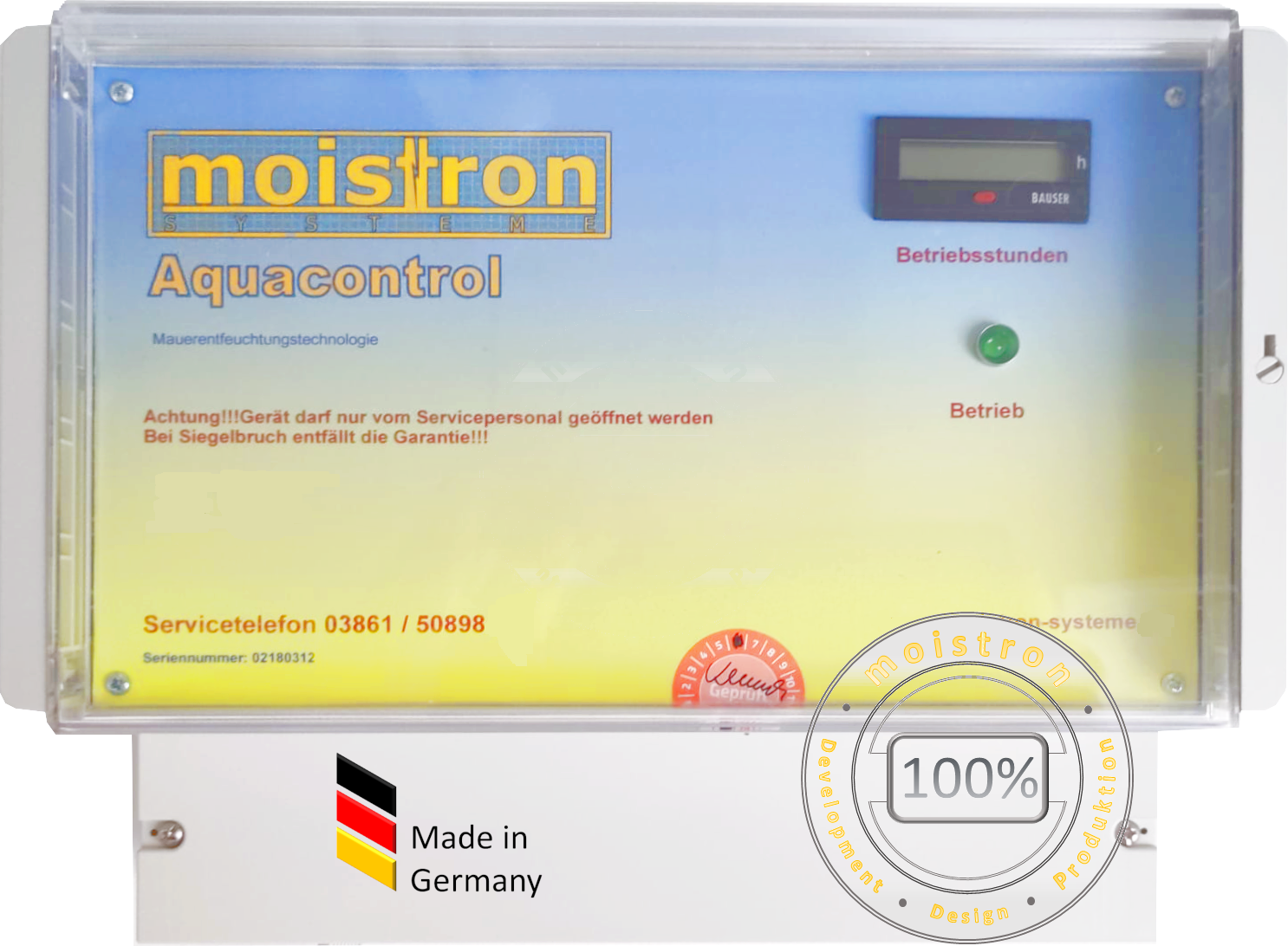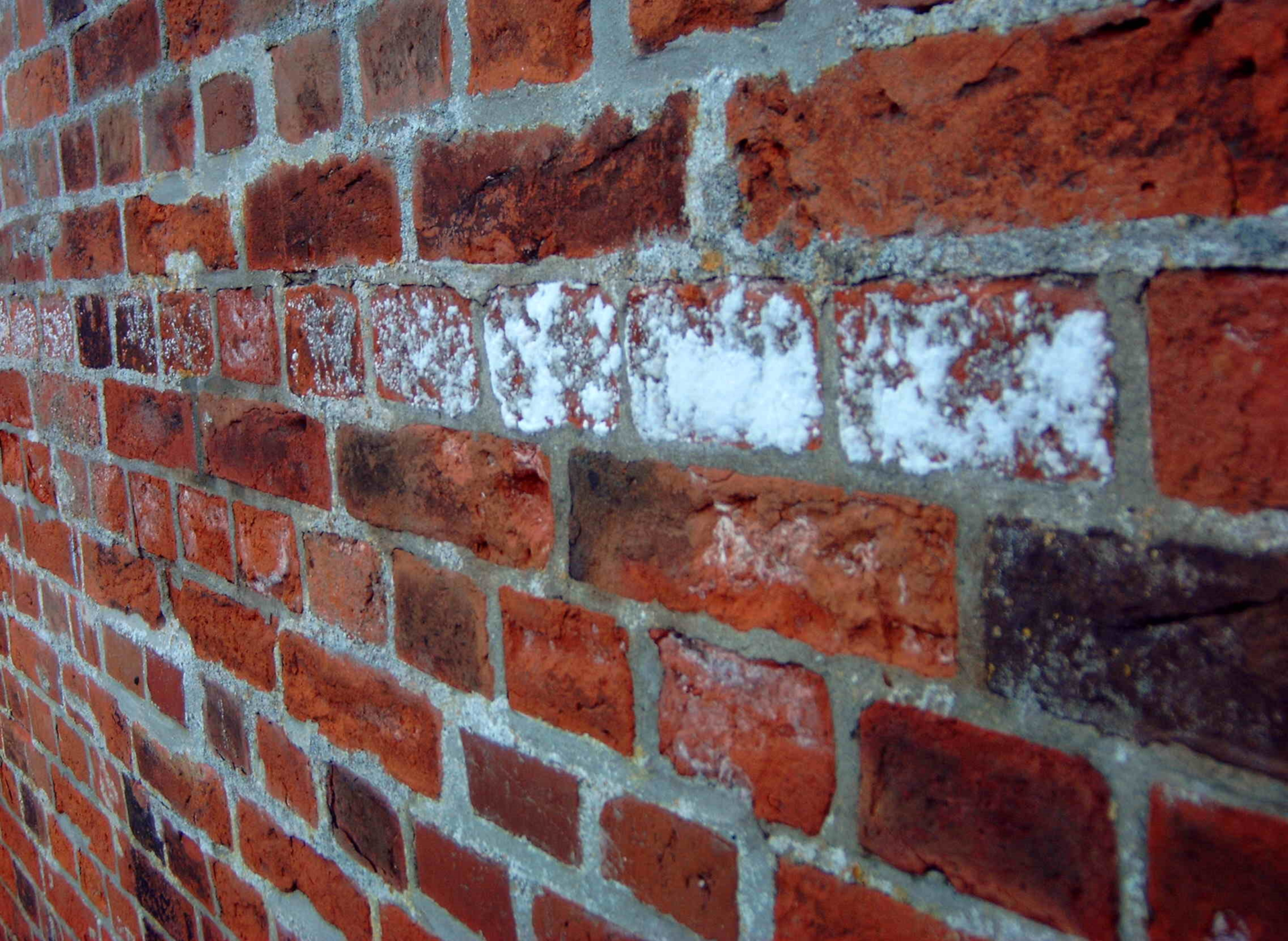
Image rights: © PantherMedia /vicnt2815/Deugefin GmbH
Causes & damage pattern

Causes & Effects of Moisture
In simple terms, the causes of wall moisture can be divided into 4 areas:
- Condensation moisture mold
- New building moisture
- Rising damp
- Other causes e.g. damage, broken pipes etc.
Capillary rising moisture causes the following damage
Rising soil moisture is clearly visible in the so-called evaporation zone. This zone can vary depending on the building material. Climbing heights up to the first floor have been observed. As a rule, the climbing height is significantly lower, approx. +49 251 9313589 cm above the ground is normal. In this area the moisture evaporates and the salts (among others) transported there remain behind. The evaporation zone is expressed as follows:
- Peeling plaster and/or cracks in the masonry/plaster
- Salt efflorescence inside and/or outside the house
- Water marks on the masonry inside or outside the house
- Significant color differences, for example in the clinker or plaster inside and/or outside of the house
- Mold formation and/or musty smell
- Wallpaper and/or wooden skirting boards don't stay on the wall and often start to look too modern
© moistron systems
Further problems
Damp masonry is accompanied by reduced thermal insulation. It drives up heating costs and has a significant influence on the indoor climate. Residents of such properties often feel sick or complain of flu symptoms. In addition to the cold, the cause is usually mold formation, which can have a significant impact on health and well-being, e.g. asthma, allergies, etc.
The only solution can be to dry the wall(s) and first measure the moisture. At best, this doesn't just take place on the surface, but deep in the masonry. If pressurized water (e.g. recognizable by the formation of puddles), heavy rain, a broken floor slab, leaking tap water or rainwater that is accidentally led into the masonry (e.g. incorrect or blocked drainage) can be ruled out, it can usually be assumed that the soil is rising.
A building expert should give you final certainty.
This has the following meaning for the homeowner
A greatly reduced insulation value of the masonry due to moistureincreases heating costs. Wet cold wallsreduce living comfortandput a strain on your health. TheLifespan of the building is shortened. The attrition processes of frost and salts resultPaint chips, plaster damage and wall corrosion. Cause damp wallsDamage to inventoryandhigh costs, as long as the cause is not found and eliminated.
Damp walls increase heating costs
More moisture = worse insulation
poorer insulation = higher heating costs
at around 4% damage moisture you still have 50% insulation value (k-value)
at around 10% damage moisture you still have 23% insulation value (k-value)
10% moisture damage worsens the insulation value by 77%.


The value of the house falls
Damp walls destroy the substance of the house. This can lead to static uncertainties. Nobody wants to live in a damp property, let alone purchase it. Sooner or later, every property owner will incur renovation costs. In the case of old buildings, it is important to ensure that the environment is included in the planning.
Expensive renovation costs
If possible, you can get capillary rising soil moisture under control using conventional means. This means that you will usually be visited by a renovation company and then a comprehensive renovation plan will be presented to you. Costs of up to EUR 50,000 are not uncommon, depending on the scope and effort of the renovation measures. If, for example, an entire house has to be "excavated" all around, then the costs can quickly exceed the 50,000 EUR mark.
Dry walls are a MUST
We also advocate dry walls. But we would like to avoid that the walls of a property are not dried if, for example, the funds for extensive renovation are not available, or there is simply no possibility of fundamental renovation. For example, there is a lack of space due to a narrow development, the property is very old and therefore has no barrier layer or drainage facility, etc.
In order to protect the health of the family, to keep costs under control and to restore the property to its original condition, that is, to maintain the value of the property, can
Aquacontrol 102
be a simple and long-term solution for capillary rising soil moisture. With an excellent price/performance ratio. In continuous operation or preparing for a major renovation,
Aquacontrol 102
dries yours
Walls, eliminates the evaporation zone and ensures that moisture is gently returned to the soil.
The Bavarian State Ministry for Economic Affairs, Transport and Technology states this in its information on saving energy (Information sheet No. 16 "Costs and economic viability of individual measures")
Aquacontrol has addressed this problem and developed a very elegant solution with its module
There is practically no construction work. The thermal insulation value is significantly improved or restored, thus saving heating costs. Mold decreases and the entire climate in the house improves in a few weeks.
The technology has been tested by various independent institutes for effectiveness and safety.
These include, for example:
- The TÜV-Nord load case “Moisture load on components due to capillary soil moisture” - confirmed the effectiveness of the Aquacontrol system
- The Federal Network Agency test number +49 251 9313589
- Building biologist (IBN) expert for indoor mold (TÜV) - compliance with the Federal Immission Control Ordinance (BimSchV)
- Compliance with the so-called Swedish standard (TCO) from 100cm, from 150cm electric. Alternating fields
All confirmed good results.
Proven 100 times over, we think cheaper and faster than withAquacontrol 102you can hardly get any moisture out of the masonry.
Aquacontrol 102 should not be used in the case of pressurized water, tap water damage or influences that cannot be traced back to capillary soil moisture.


















